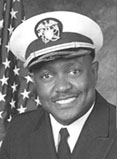Dr. Woods assesses, designs, and provides services which address racial and cultural disparities in primary oral health care for at-risk populations. He is particularly interested in the oral health of racial/ethnic minorities and immigrants, and the role of systemic disease upon their oral health status. He currently serves a 1,200-inmate diverse population at Federal Medical Center Devens, one of the federal Bureau of Prison’s (BOP) 6 medical centers serving federal prisoners with complex medical needs. There are 119 federal prisons in America, housing more than 211, 223 inmates. As the federal BOP National Periodontal Consultant, Dr. Woods develops training and policy to better assist general dentists working in the BOP with management of inmate periodontal needs. As the chair of the Dental Category of the U.S. Public Health Service, CDR Woods heads the Dental Professional Advisory Committee, providing advice and consultation to the Surgeon General of the U.S. Public Health Service on issues related to professional practices and personnel activities of Civil Service and Commissioned Corps Dentists.
Committed to the identification, recruitment, and retention of qualified minority high school students for oral health careers, he has taught periodontics at Meharry, University of Michigan, Tufts, Harvard, Boston University and University of North Carolina Dental Schools, and is a former Captain in the U.S. Army Reserves. Dr. Woods co-authored the first chapter on Oral Medicine in a prominent correctional medicine text by Michael Puisis in 2006; his earlier research deals with dental considerations in bone marrow transplant patients. He is also the 2007 recipient of the Ernest Eugene Buell Dental Award, given annually to the Junior PHS Dental Officer who has made a significant contribution in oral health education, research or service.
Dr. Woods received a dental degree from the UNC Dental School in 1984, his periodontal certificate from Tufts University in 1986; he completed an oral medicine fellowship at Brigham and Women's Hospital in 1989, and obtained his M.P.H. degree from Harvard in 2002 as part of the CFHU Fellowship. He became a Diplomate of the American Academy of Periodontology in November 2005. In his non-dental hours, Woods is a professional musician who leads song workshops throughout the US and abroad.
Learn more about The Joseph L. Henry Oral Health Fellowship in Health Policy Leadership.


